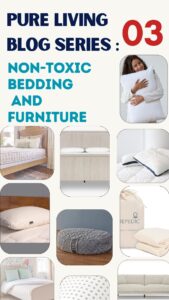
In our ongoing journey towards a toxic-free lifestyle, one often overlooked aspect is the bedding and furniture we surround ourselves with. Conventional bedding and furniture might seem harmless at first glance, but they can harbor a plethora of toxins that gradually seep into our living spaces, affecting our health in subtle yet significant ways. This blog post of our toxic-free living series delves into the importance of opting for organic bedding and furniture, outlining the key differences, and providing insights into choosing the right products for a healthier home environment.
Understanding the Toxins:
Conventional bedding and furniture are often manufactured using synthetic materials that are laden with harmful chemicals. From flame retardants to formaldehyde and volatile organic compounds (VOCs), these toxins can off-gas over time, contributing to indoor air pollution and posing potential health risks. Prolonged exposure to such toxins has been linked to respiratory issues, skin irritations, and even more serious health concerns like hormone disruption and cancer.
What to Look For:
When seeking non-toxic bedding and furniture, opt for products made from certified organic materials. Look for certifications like Global Organic Textile Standard (GOTS) for bedding and Global Organic Latex Standard (GOLS) for furniture, ensuring that the products meet stringent organic and environmental standards. Natural materials such as organic cotton, wool, and natural latex are excellent choices as they are free from harmful chemicals and offer superior comfort and durability.
Certainly! When seeking non-toxic bedding and furniture, it’s crucial to know what to look for to ensure that the products you choose are safe and healthy for your home environment. Here’s a detailed explanation of what to look for:
- Certifications: Look for products that carry reputable certifications indicating their organic and non-toxic status. The Global Organic Textile Standard (GOTS) is one of the most recognized certifications for organic textiles, including bedding. GOTS ensures that the entire production process, from harvesting raw materials to final product labeling, meets strict organic and environmental standards. For mattresses and furniture, look for certifications such as the Global Organic Latex Standard (GOLS) for latex and the Forest Stewardship Council (FSC) for wood products, which ensure sustainable and responsible sourcing.
- Natural and Organic Materials: Opt for bedding and furniture made from natural, organic materials such as organic cotton, wool, and natural latex. Organic cotton is grown without synthetic pesticides or fertilizers, reducing exposure to harmful chemicals. Wool is naturally flame-resistant and offers temperature-regulating properties, making it an excellent choice for bedding. Natural latex, derived from the sap of rubber trees, is free from synthetic additives and provides comfortable support without off-gassing harmful chemicals.
- Transparency and Disclosure: Choose brands that prioritize transparency and provide detailed information about their materials, manufacturing processes, and certifications. Transparent brands are more likely to use safe and non-toxic materials and adhere to ethical and sustainable practices. Look for brands that openly disclose the sources of their materials and provide information about any third-party certifications they hold.
- Hypoallergenic Properties: If you have allergies or sensitivities, consider bedding and furniture that are hypoallergenic and resistant to dust mites, mold, and mildew. Natural materials like wool and organic cotton are inherently hypoallergenic and can help create a healthier sleep environment by reducing allergen exposure. Additionally, look for bedding and furniture with removable, washable covers for easy maintenance and cleaning.
- Durability and Longevity: Investing in high-quality, durable bedding and furniture not only ensures longevity but also reduces the need for frequent replacements, minimizing environmental impact. Look for products with sturdy construction and durable materials that can withstand daily use and maintain their integrity over time. While non-toxic products may have a higher upfront cost, their longevity and health benefits often outweigh the initial investment.
By considering these factors and prioritizing non-toxic materials and certifications, you can confidently choose bedding and furniture that contribute to a healthier and more sustainable home environment. Making informed decisions about the products you bring into your home can have a positive impact on your health and well-being for years to come.
What to Avoid:
Steer clear of bedding and furniture labeled as “stain-resistant,” “wrinkle-free,” or “anti-microbial,” as these often contain synthetic chemicals like perfluorinated compounds (PFCs) and antimicrobial agents that can be harmful to health. Additionally, avoid products with synthetic foams and fabrics treated with flame retardants, opting instead for natural alternatives that are inherently flame-resistant.
Certainly! When looking to avoid toxins in bedding and furniture, it’s essential to understand the specific materials and chemicals commonly used in conventional products that can pose health risks. Here’s a detailed explanation of what to avoid:
- Synthetic Materials: Conventional bedding and furniture often utilize synthetic materials such as polyester, polyurethane foam, and synthetic fabrics. These materials can emit volatile organic compounds (VOCs) over time, contributing to indoor air pollution. VOCs have been linked to respiratory issues, headaches, and allergic reactions. Opting for natural, organic materials like cotton, wool, and natural latex eliminates exposure to these harmful chemicals.
- Flame Retardants: Many conventional mattresses, upholstered furniture, and bedding are treated with flame retardant chemicals to meet flammability standards. These chemicals, including polybrominated diphenyl ethers (PBDEs) and chlorinated tris, have been associated with adverse health effects such as hormone disruption, reproductive problems, and even cancer. Choosing products made with natural flame-resistant materials like wool eliminates the need for these toxic chemicals.
- Formaldehyde: Formaldehyde is commonly used in the manufacturing of furniture, particularly in composite wood products like plywood, particleboard, and MDF (medium-density fiberboard). It is also found in some mattress adhesives and finishes. Exposure to formaldehyde can irritate the eyes, nose, and throat and has been classified as a carcinogen by the International Agency for Research on Cancer (IARC). Opt for furniture made from solid wood or certified low-formaldehyde composite wood products.
- Perfluorinated Compounds (PFCs): PFCs are chemicals used in stain-resistant and water-repellent treatments applied to fabrics and upholstery. They have been linked to various health concerns, including reproductive problems, immune system suppression, and developmental delays. Avoid bedding and furniture labeled as “stain-resistant” or “water-repellent,” as they likely contain PFCs.
- Antimicrobial Treatments: Some bedding and furniture may be treated with antimicrobial agents to inhibit the growth of bacteria, mold, and mildew. These chemicals, such as triclosan and triclocarban, have been linked to antibiotic resistance and hormonal disruption. Choosing products without antimicrobial treatments reduces unnecessary exposure to these potentially harmful substances.
By being mindful of these common toxins and avoiding products that contain them, you can create a safer and healthier environment in your home. Opting for non-toxic bedding and furniture made from natural, organic materials not only benefits your health but also supports sustainable and eco-friendly manufacturing practices.
Non-Toxic Bedding and Furniture Brands:
- Naturepedic: Renowned for their organic mattresses and bedding, Naturepedic offers a wide range of GOTS-certified organic cotton sheets, mattresses, and pillows, ensuring a safe and comfortable sleep environment.
Medium Firm Mattress:
Full Firm Mattress:
Organic Latex Pillow:
Mattress Protecting Pad:
- Avocado Green Mattress: Committed to sustainability and transparency, Avocado Green Mattress produces GOTS-certified organic mattresses and bedding made from natural latex, wool, and cotton, free from harmful chemicals.
Pillow:
3. Joybird: Joybird is a furniture brand that offers customizable, handcrafted furniture made with non-toxic materials. They use responsibly sourced wood, water-based adhesives, and low-VOC finishes to create sustainable and eco-friendly furniture pieces.
JoyBird Bed
JoyBird Dresser
JoyBird Sofa
4. Brentwood Home: With a focus on eco-friendly materials, Brentwood Home offers GOTS-certified organic bedding and furniture, including mattresses, pillows, and upholstered pieces, crafted from natural latex, wool, and organic cotton.
Meditation Cushion
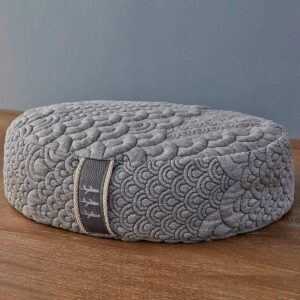
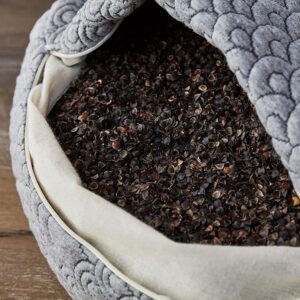
Pillow:
Yoga Bolster
5. PlushBeds: PlushBeds is known for its range of organic mattresses that are free from harmful chemicals and toxins. They use natural materials like organic latex, cotton, and wool to provide a comfortable and healthy sleep environment.
Plushbeds:
By choosing non-toxic bedding and furniture, we not only create a healthier living space for ourselves but also contribute to a more sustainable and environmentally friendly future. Prioritizing organic materials not only benefits our health but also supports ethical and responsible manufacturing practices. Let’s embrace non-toxic living also, read the other parts of this blog series here and create a home that promotes well-being inside and out.
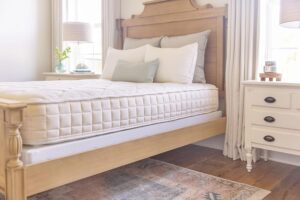
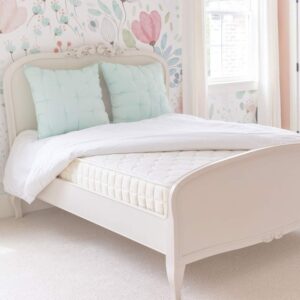
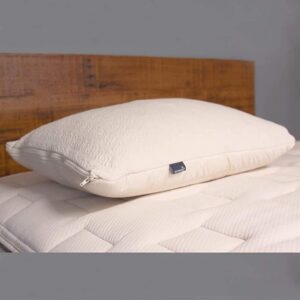
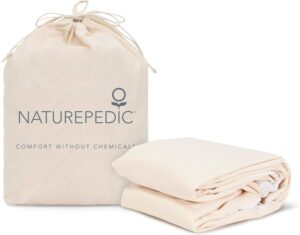
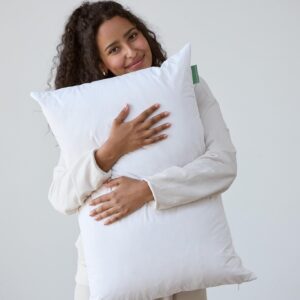



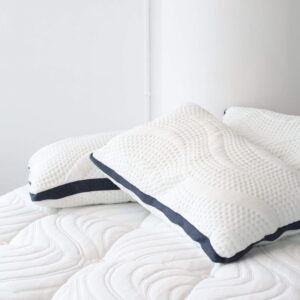
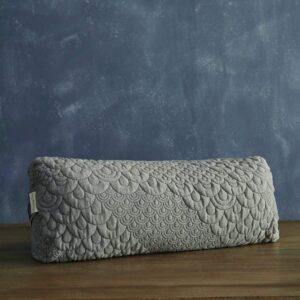
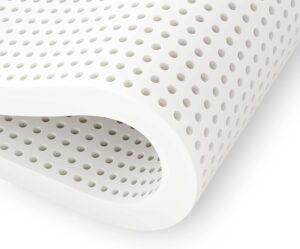
Comments will load here